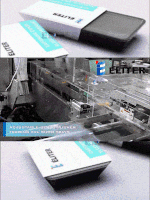8 questions to consider when designing packaging
2023-02-09
Every day it is more important to design and produce packages that meet requirements such as costs, brand strengthening, that generate some kind of purchase desire, are visually attractive, meet usability criteria, are sustainable, competitive and can even be patented, in addition to other important aspects.

A headache for creatives is thinking about how to design a product that is different from the competition, that cannot be matched and at the same time offers a value that the consumer is willing to pay for. Sometimes a striking project fails to stand out because it does not meet the minimum engineering requirements to be a technically functional packaging compatible with production lines.
To reach a global conceptualization, before starting with the design and development of a package, it is convenient to make a checklist, answering the eight points listed below.

1. What will it carry in its content?
Having defined what the packaging will contain, you can be more assertive and easily manage to choose its material, representation, shape, color, decoration, and it is even possible to calculate the ideal weight.
2. What material should it be made of?
The packaging is designed to protect its contents against blows or mistreatment during transport and handling. In the food sector it is important to protect them against oxygen, gases, water vapor and even aromas, all this to extend the shelf life of products and protect their nutrients against bacteria. Likewise, if we talk about margarines for example, they produce chemical reactions that attack plastic packaging and for this the materials and components of the formulation must be studied well.
3. What capacity and filling level will it have?
One of the most frequent problems is miscalculating the size of the packaging, due to ignorance of the density of the product and/or food to be packaged. Sometimes creatives and engineers define a wrong volume of content, having to make adjustments to the design, a process that takes more time and even incurs higher expenses than initially defined.
For those products that intend to be packaged with additions of cereal, fruit, dessert or any other accompaniment, so that the consumer can mix it with the main product, containers must be designed that have sufficient volume inside. The internal head space should be calculated, as this could encourage the collapse or deformation of the container due to changes in atmospheric pressure.

4. What is the filling temperature of the product to be packaged and the distribution chain?
It is important to know what the temperature of the product to be packaged will be, since sometimes this is a limiting factor in the design and / or material to choose. Not all materials withstand high temperatures; for example, some products cannot be immediately sealed with 100% hermeticity when being packaged, because the gases produced by this process can get trapped, generating deformations.
In the case of products that are subjected to temperatures below -30 °C, specific designs and materials should be used, to avoid susceptibilities to breakages due to occasional impact.
5. How is it going to be decorated?
There are several types of decoration for a product on the market. Among the most common we have printing, heat-shrinkable sleeves, self-adhesive labels, cardboard covers and IML (in-mold labeling). Before designing, it is necessary to establish how the container is going to be decorated, as this could limit and direct the ideal shape of the packaging.
6. Will the packaging fit or will it be assembled with another?
Many of the packages have an additional assembly process, it may well be a lid, base or another element. Having this information is extremely important to define how the adjustment system and control between the two elements will be.
7. What technology is available for manufacturing?
The creative and engineer must work as a team. Many times the creative person does not know the manufacturing technologies and when they reach production the risks materialize, generating reprocesses and sometimes major modifications in the design.
8. What are the filling machines like on the production line?
It is extremely important for customers that their products work correctly on their production lines. To achieve this, the entire system must be known first-hand: from the moment of loading, through the filling and sealing processes, to the final packaging. This will help the engineering and design areas to have an acceptable product.
All these considerations, added to other design factors, such as demoulding angles, gap or stacking systems, make a product visually attractive to the final consumer and technically viable for the customer.




